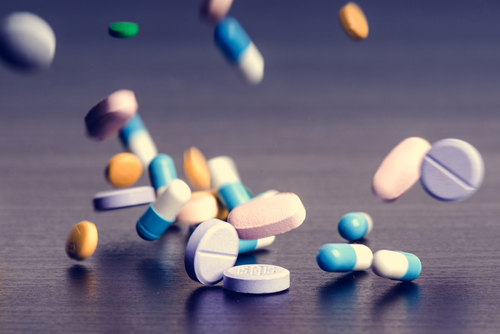CVS Health is a $75 billion business. The Rhode Island based healthcare company employs 160,000 people. The company has over 9,800 stores across the world, and they have around 5 million customers per day. Last year CVS Health pulled in $195 billion in sales. Since CVS completed the long-awaited merger with Aetna, revenue might increase even more this year.
The $70 billion merger was officially approved in November. So today, we’re going to review what this means for one of the best dividend stocks around. Let’s take a look at CVS Health’s dividend history and safety…
CVS Health’s Dividend History and Safety
CVS Health has raised its dividend every year since 2004. A decade ago, the company paid investors $0.305 per share. Over the last 10 years, the dividend has climbed to $2. That’s a 556% increase and you can see the annual changes below…

The compound annual growth is 20.7% over 10 years… but over the last year, the dividend climbed 0%. The slowdown in dividend growth isn’t a great sign. Although, CVS Health still might be a good income investment. It is a major force in the industry, and it always finds ways to stay relevant and grow. The recent merger with Aetna is an excellent example. It is a bold move. To quote NASDAQ, “There has been no company in the United States that combines the power of a drugstore distribution network, a PBM (pharmacy benefit manager) and a health insurance company – but if anyone could pull it off, CVS could.” Let’s take a look at the yield…
Current Yield vs. 10-Year Average
CVS Health’s long history of paying dividends makes it one of the best dividend stocks around. This also makes the dividend yield a great indicator of value. A higher yield is generally better for buyers. Sustainability is also vital, and we’ll look at that soon.
The dividend yield comes in at 3.45% and that’s above the 10-year average of 1.84%. The chart below shows the dividend yield over the last 10 years…

The higher yield shows that investors have bid down the company’s market value. They might be expecting higher growth and payouts. But more often than not, the dividend yield is mean reverting with share price changes.
Improved Dividend Safety Check
Many investors look at the payout ratio to determine dividend safety. They look at the dividend per share divided by the net income per share. So, a payout ratio of 60% would mean that for every $1 CVS Health earns, it pays investors $0.60.
The payout ratio is a good indicator of dividend safety… but accountants manipulate net income. They adjust for goodwill and other non-cash items. A better metric is free cash flow.
Here’s CVS Health payout ratio based on free cash flow over the last 10 years…

The ratio is volatile over the last 10 years. The last reported year shows a payout ratio of 30.6%. This gives plenty of room for CVS Health’s board of directors to raise the dividend.
Conclusion
The dividend payout ratio is low so the dividend is safe for now. The company has a history of paying steady dividends, and the dividend yield is well above its 10-year average. So, new investors should collect more income down the road. Plus, the merger could potentially increase the dividend. In fact, CVS Health CEO Larry Merlo recently told investors that “the company expects to see benefits start to accrue in the first quarter of 2019.”
Good investing,
Robert
P.S. If you’re interested in finding your dividend investment returns, check out our dividend reinvestment calculator.
